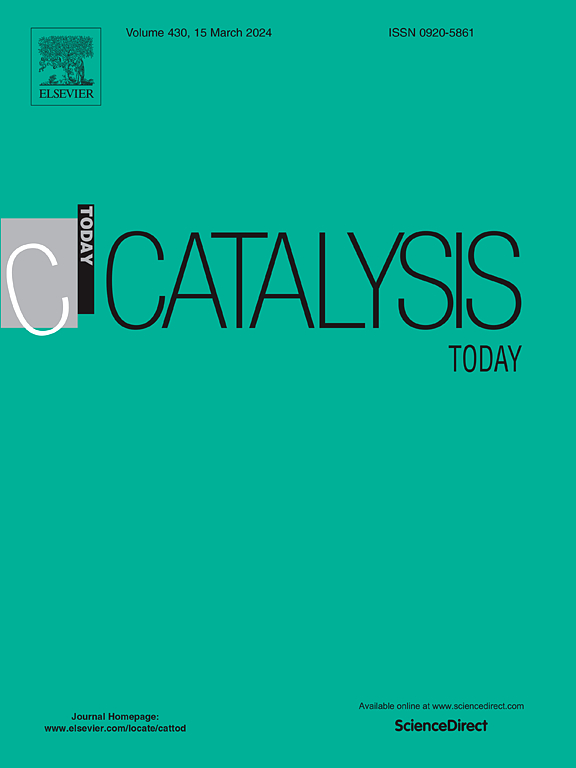Optimizing operational strategies in a non-isothermal bench-scale fixed-bed reactor for CO2 hydrogenation to CH4 combining experimental and modeling and simulation approaches
IF 5.2
2区 化学
Q1 CHEMISTRY, APPLIED
引用次数: 0
Abstract
The CO2 methanation reaction is a promising solution for renewable energy storage. However, the process is challenged by thermal management due to its exothermic nature, leading to hot spots that complicate reactor operation and scale-up. This study combines experimental and simulation approaches to optimize the operation of a bench-scale fixed-bed reactor. Experimental results show that reactor wall temperature, flow rate, and nitrogen dilution significantly affect temperature profiles and CO2 conversion. As a refrigeration strategy, it has been studied the use of pressurized air jackets to improve heat dissipation and stabilize the operation. A dynamic 1D heterogeneous model validated these findings and enabled simulation-based optimization. Non-uniform particle size distributions, metal loading, and SiC dilution strategies effectively mitigated hot spots without compromising CH4 yield. These results offer critical insights into reactor design, ensuring stable operation and high efficiency.
求助全文
约1分钟内获得全文
求助全文
来源期刊

Catalysis Today
化学-工程:化工
CiteScore
11.50
自引率
3.80%
发文量
573
审稿时长
2.9 months
期刊介绍:
Catalysis Today focuses on the rapid publication of original invited papers devoted to currently important topics in catalysis and related subjects. The journal only publishes special issues (Proposing a Catalysis Today Special Issue), each of which is supervised by Guest Editors who recruit individual papers and oversee the peer review process. Catalysis Today offers researchers in the field of catalysis in-depth overviews of topical issues.
Both fundamental and applied aspects of catalysis are covered. Subjects such as catalysis of immobilized organometallic and biocatalytic systems are welcome. Subjects related to catalysis such as experimental techniques, adsorption, process technology, synthesis, in situ characterization, computational, theoretical modeling, imaging and others are included if there is a clear relationship to catalysis.
 求助内容:
求助内容: 应助结果提醒方式:
应助结果提醒方式:


